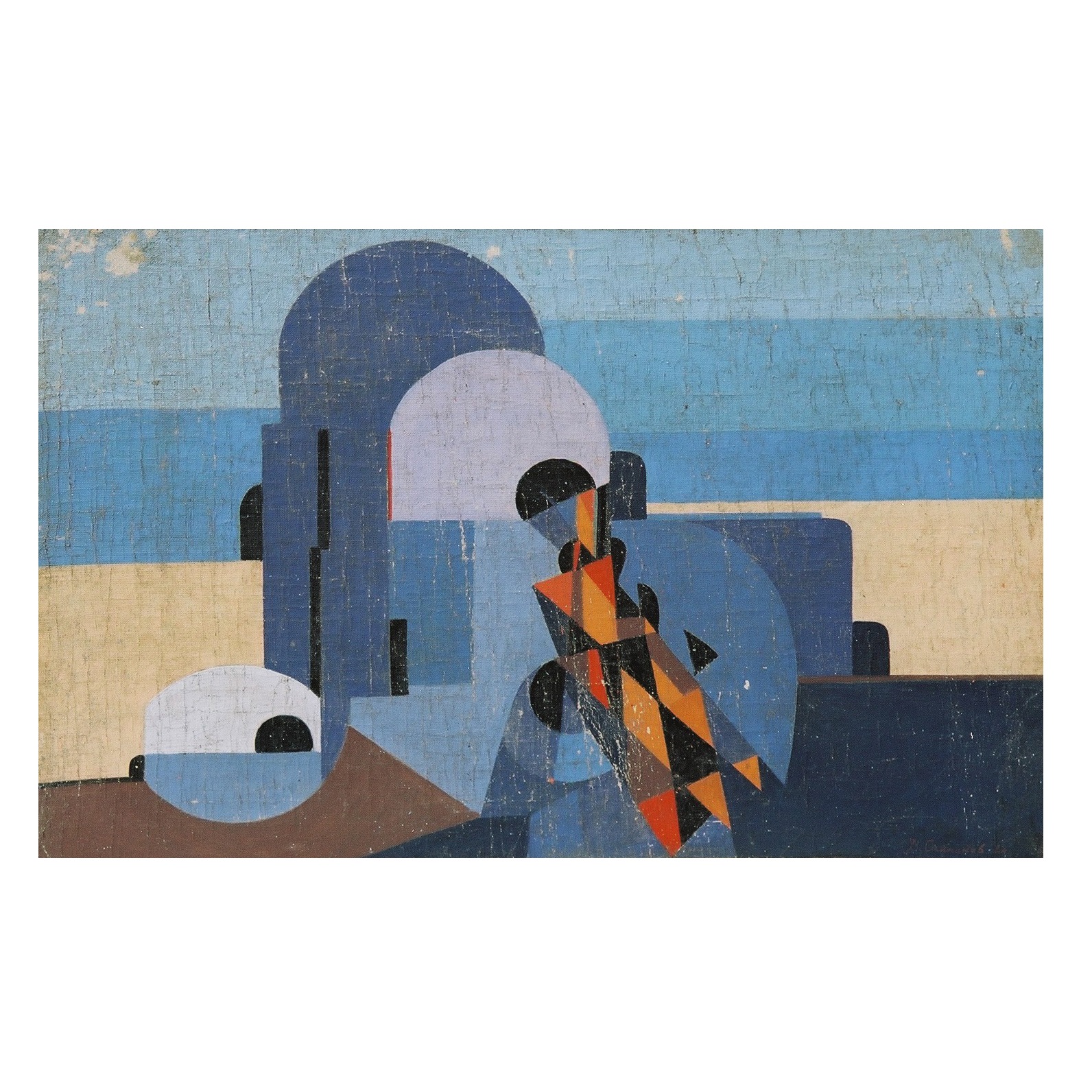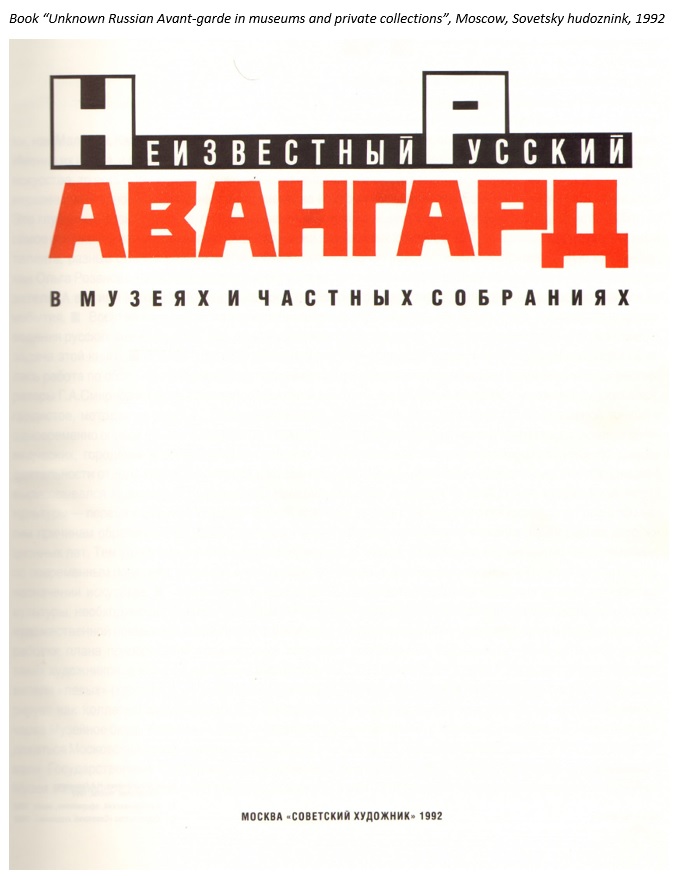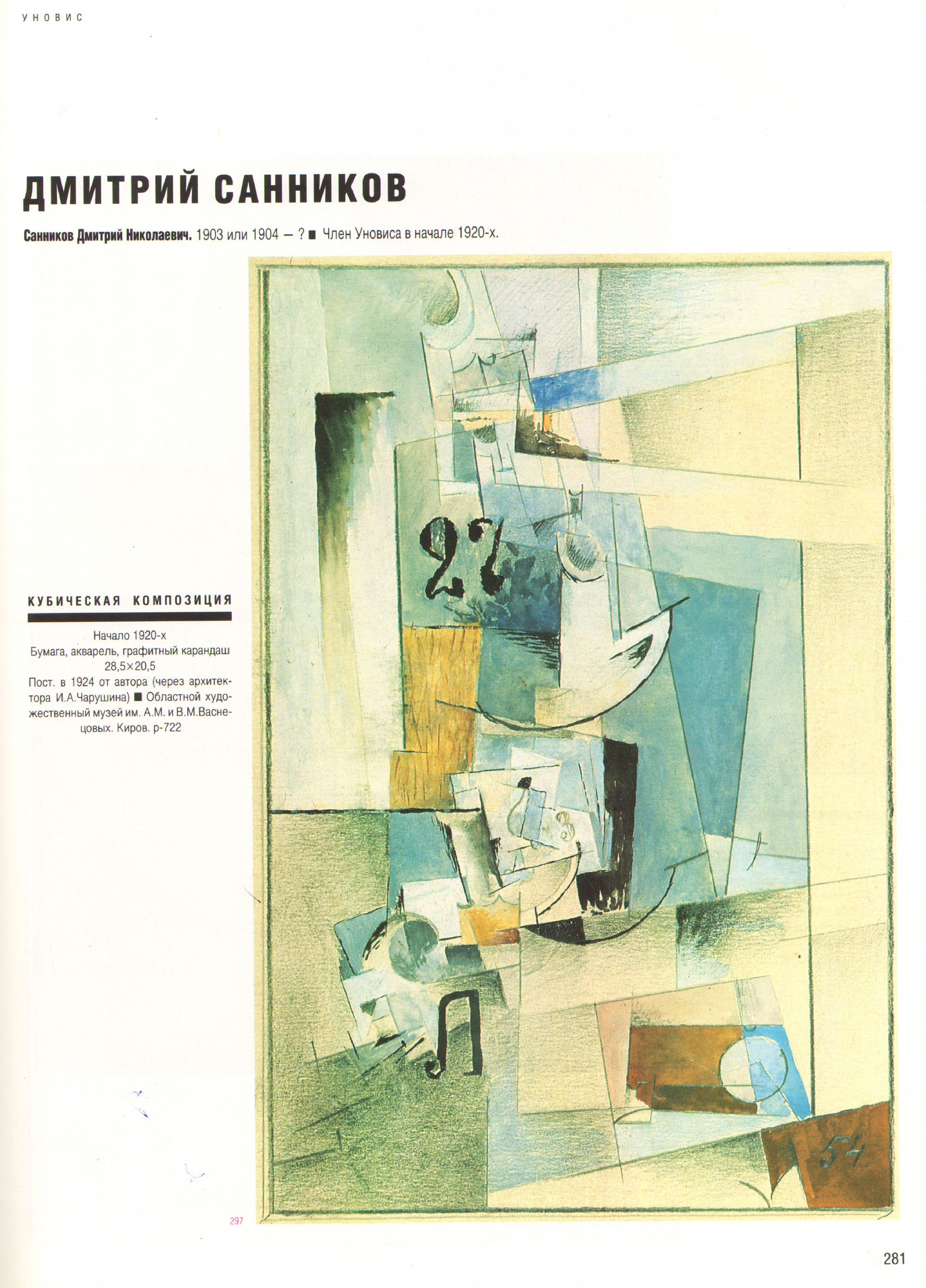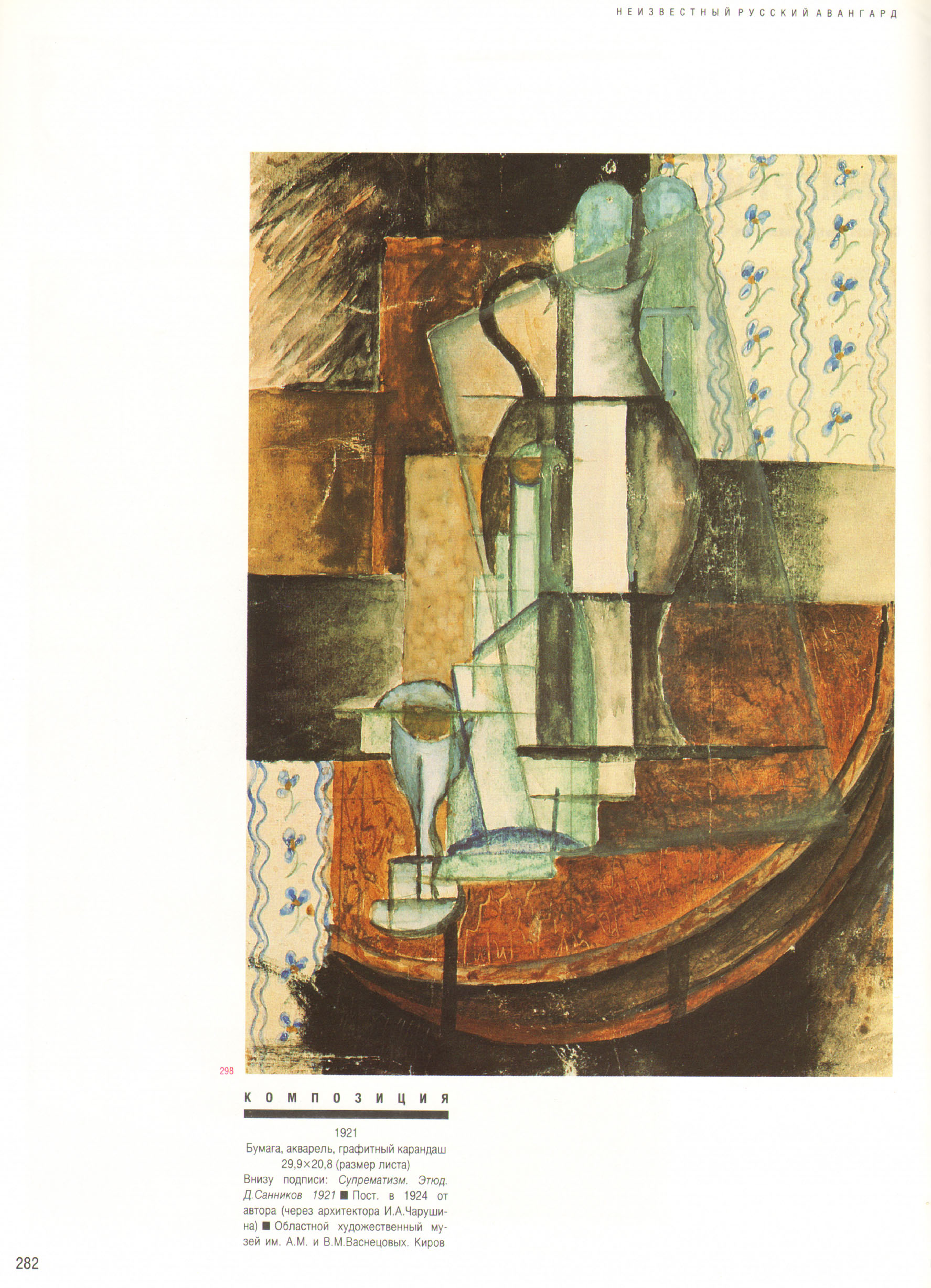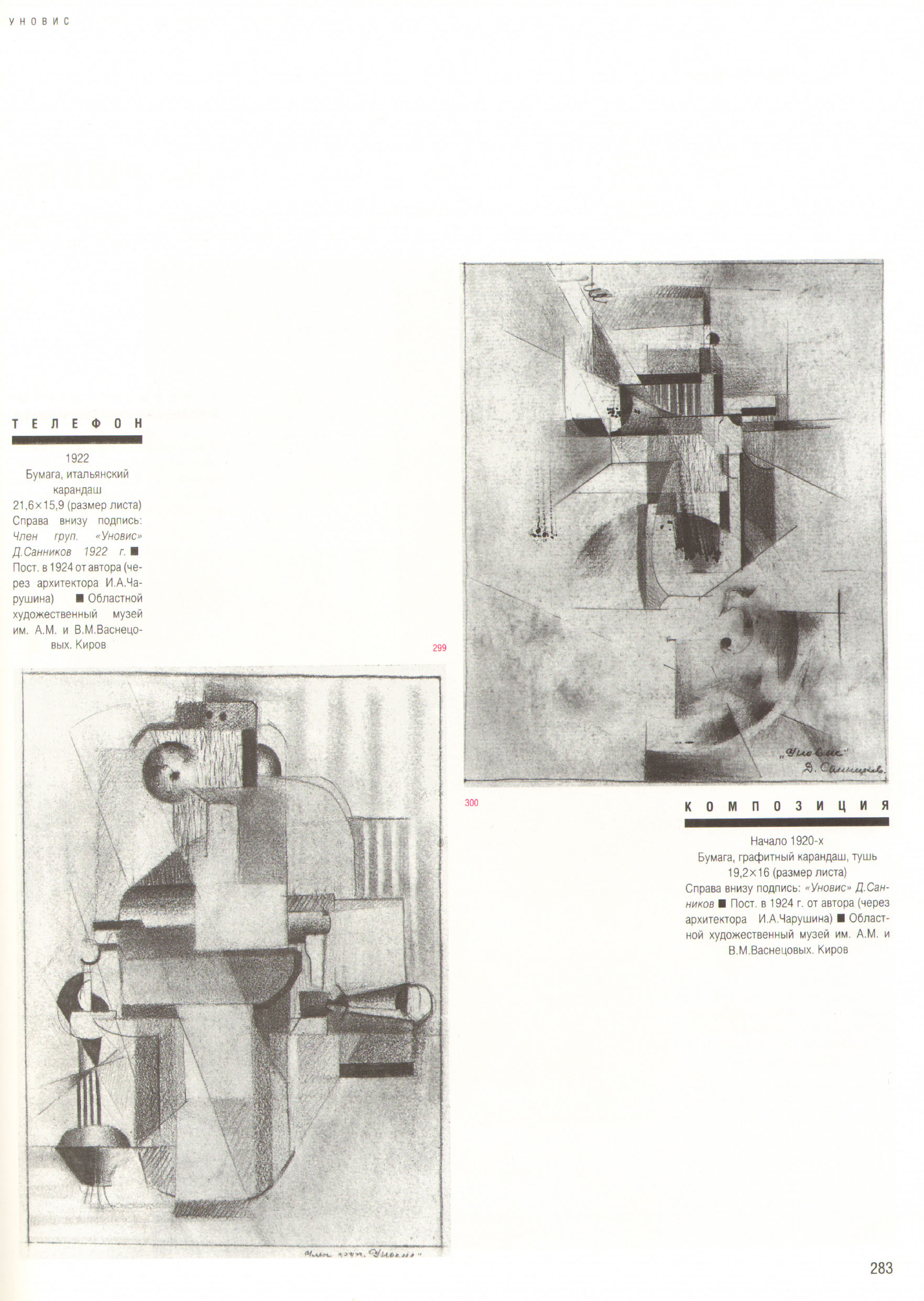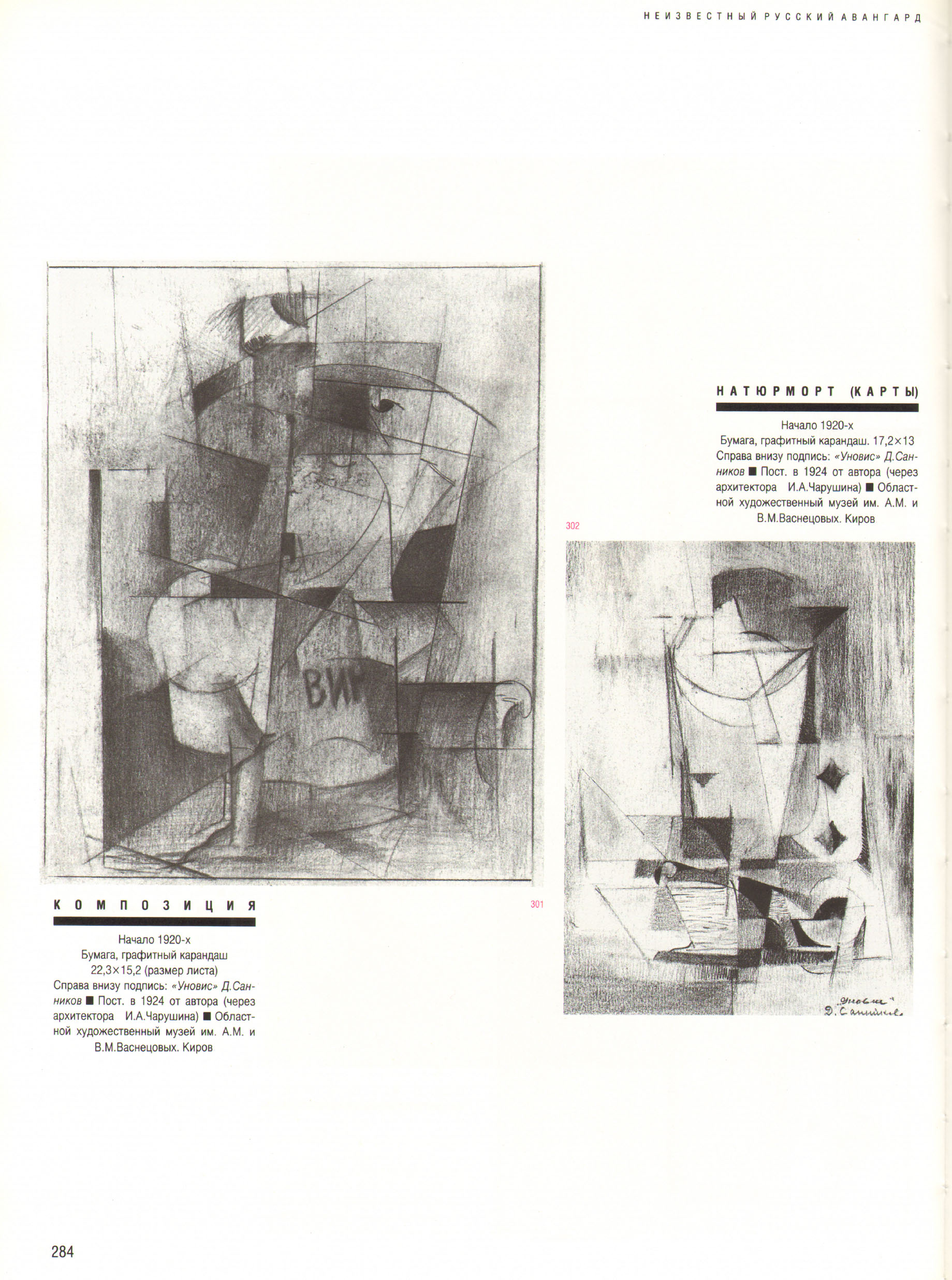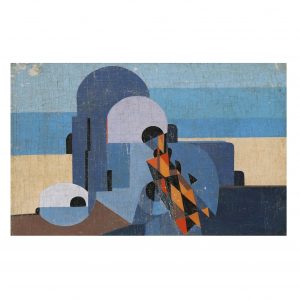SANNIKOV DMITRY NIKOLAEVICH
Avant-garde artist, graphic artist, member of the art association UNOVIS (rus. Utverditeli Novogo Iskusstva).
He was born on September 22, 1902 in Vitebsk. From 1919 to 1922 Dmitry Nikolaevich attended the Vitebsk National Art School (rus. VNHU). Before and during his studies Sannikov worked as a clerk at the provincial land department, telegraph operator on the railway, at the water transport system. However, after finishing three courses at the VNHU he decided to devote his life to art.
At that time the school that he attended was considered the most advanced educational institution in Russia. Thanks to the activities of VNHU, since its establishment in 1919 and until the mid-1920s, Vitebsk was considered one of the centres of the avant-garde. In many ways the activities of this educational institution were the motivation for the further development of many avant-garde directions in art, in particular Suprematism and Constructivism. Recognised masters of art worked in this educational institution: Yudel Pen, Marc Chagall, Kazimir Malevich, El Lissitzky, Vera Yermolaeva and others. Founded on the initiative of Chagall, the school fell under the influence of Malevich in 1920 and his special pedagogical system. The teaching was based on a step-by-step study of theory and practice of various stages of art development from Cubism to Suprematism. The first stage was Cezanneism, which was the first stage of the abstract art, and after that the students adopted the manners of Cubism and Cubo-futurism, gradually moving towards the Suprematist abstract art.
Dmitry Sannikov, according to the questionarrie he completed on January 28, 1921, took a course in Cubism at Vitebsk School. His teachers were Kazimir Malevich and Vera Yermolaeva. Sannikov’s most famous preserved works of art come from this period. They are created in a cubist manner and they highlight individual characteristics of the artist, thus they cannot be called student copies of famous paintings or copies of the manners of famous artists. His works are characteristic for their drawing accuracy, linear consistency enriched with variety of elements and for easily formed space relations. His main works of art are: Cubist Composition (1921), Telephone (1922), Still Life (Maps), series of works with the title Composition (all 1920).
In 1920, on the initiative of Malevich, the art association UNOVIS was established (Utverditeli Novogo Iskusstva) at the Vitebsk School of Art. It was established with the aim to promote ideas of the so called new art. Malevich’s students became members of UNOVIS and worked with him on equal terms, developed their own styles and actively took part in culture life of Vitebsk and Russia.
In 1922 VNHU was disbanded by the authorities. Most of the UNOVIS members were forced to move to Petrograd after Malevich. After finishing three courses at VNHU, Sannikov also left Vitebsk. In October, 1922 he started to attend a general course at the ex Academy of Arts in Petrograd. Then, in December 1923 he was transferred to the first year of the Polygraphic Faculty where he was specialised for book graphics. In 1924 Sannikov was even a member of the Subject Committee at the Polygraphic Faculty. However, he failed to complete his studies and on September 24, 1925 he was excluded from the list of students at the Academy of Arts.
From 1924 to 1926 Sannikov led scientific and practical activities at the Leningrad State Institute of Art Culture (GINHUK). The foundation of this institution’s creative team was Malevich’s group, members of which arrived from Vitebsk. Sannikov was a part of this group. At the St. Petersburg Central State Archives of Literature and Art (TsGALI) the protocol of the lesson which took place at GINHUK on February 12, 1924 was kept. At this lesson Malevich analysed Sannikov’s futurist Composition. He showed it as an example of the lighting solution in futurism and explained how it differs from the impressionist understanding of light. GINHUK as an independent research institution existed until 1926.
In Leningrad, Sannikov also worked as the head of the Circle of fine arts of Vasileostrovsky and Vybrogsky Educational Homes. He was mentioned by the magazine Life of Art (No 40 October 5, 1925) for his social activities. In 1926 he was mobilised by the Red Army.
There are very little information about his further activities and life. We are informed about his works after the mid-1920s only from the memoirs of the artist K. I. Rozhdestvensky (1906-1997): He worked at home and took his works with him for conversations with K. S. (*Malevich). His veronese white shades of futuristic rhythms are expressive. One of Sannikov’s canvases hung in Malevich’s office, the work Movie Camera.
The last evidence about Sannikov is found in the diary of the avant-garde artist Lev Alexandrovich Yudin (1903-1941) and it is dated February 1928.
